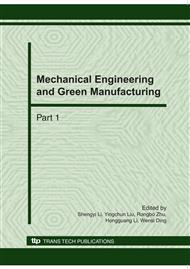p.217
p.222
p.227
p.232
p.238
p.242
p.247
p.252
p.260
Experimental Study on Slab Track Passenger Transportation Special Line Roadbed Power Response
Abstract:
In order to assure the security of Wuhan–Guangzhou railway passenger dedicated line, the experiment study of dynamic response was developed in the construction finished roadbed. The longitudinal wave velocity and the transversal wave velocity of stress wave in the roadbed were obtained. The weaken rule of stress wave in roadbed was analyzed during its dissemination and the dominant frequency was gained in the vibration structure. The dynamic modulus of elasticity and the poisson's ratio of roadbed material were defined. Furthermore, the experiment simulated the process of train instant load during transmitting in the roadbed. The influence of roadbed material, structural property to locomotive safe, steady movement was researched. These conclusions provide uses for reference importantly to guarantee the quality of slab track on railway passenger special line under construction.
Info:
Periodical:
Pages:
238-241
Citation:
Online since:
October 2010
Authors:
Keywords:
Price:
Сopyright:
© 2010 Trans Tech Publications Ltd. All Rights Reserved
Share:
Citation:


